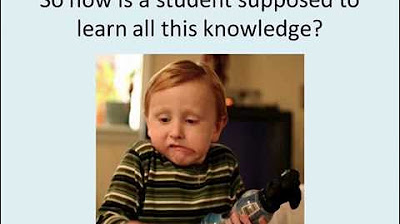See Germs! Hand Washing Science Experiment
Summary
TLDRThe transcript captures a dynamic and rhythmic interaction filled with musical elements and vocalizations, primarily featuring repetitive phrases such as 'we' and playful sounds like '으.' This engaging mix of music and dialogue suggests a lively atmosphere, potentially revolving around a fun activity or event. The recurring musical breaks create a sense of anticipation and excitement, inviting viewers to immerse themselves in the experience being shared. Overall, the transcript hints at a vibrant, participatory environment, making it appealing for audiences looking for entertainment and enjoyment.
Takeaways
- 😀 The script contains a significant amount of repetitive sounds and phrases, suggesting a playful or musical context.
- 🎵 Music plays a central role in the interaction, indicating an engaging or entertaining environment.
- 👥 The repeated use of 'we' implies a collective experience or shared activity among participants.
- 🔄 The phrase '으' indicates filler sounds that may be used to maintain rhythm or keep the flow of conversation.
- 🎤 The transcript suggests moments of emphasis through repetition, potentially highlighting excitement or enthusiasm.
- 🎶 Transitions in the script are marked by music, showing a dynamic interplay between spoken words and musical elements.
- 🗣️ There are indications of a casual and informal tone, likely aimed at a familiar audience.
- 💬 The fragmented nature of speech points to spontaneity, possibly reflecting improvisation or a live setting.
- 🎉 The overall vibe suggests a fun and lively atmosphere, potentially suitable for a social or entertainment-focused video.
- ✨ The script emphasizes a sense of community, with phrases and sounds that bring people together.
Q & A
What is the main theme of the transcript?
-The transcript appears to include repetitive phrases and music interludes, indicating a focus on rhythm and sound rather than a coherent narrative.
How many times is the word 'we' mentioned in the transcript?
-'We' is mentioned multiple times, suggesting a collective experience or perspective.
What role does music play in the transcript?
-Music is indicated at various points in the transcript, serving as a backdrop that likely enhances the emotional or atmospheric elements of the content.
Are there any discernible actions or events described in the transcript?
-The transcript mainly consists of fragmented phrases and sounds, lacking clear actions or events.
What can be inferred about the mood or tone of the transcript?
-The mood appears to be somewhat abstract and repetitive, possibly evoking a feeling of contemplation or rhythm rather than a defined emotional tone.
Does the transcript indicate any specific setting or context?
-The transcript does not provide any specific setting or context; it is primarily focused on auditory elements.
How might the repetitive elements affect audience engagement?
-Repetitive elements can create a meditative or hypnotic effect, potentially increasing audience engagement through rhythmic familiarity.
What does the inclusion of sounds like '으' suggest?
-The sounds like '으' suggest a vocal expression that may convey emotion or emphasis, adding a layer of texture to the audio experience.
Is there any clear conclusion or resolution presented in the transcript?
-No clear conclusion or resolution is presented; the transcript remains open-ended and abstract.
How might this transcript be used in a creative context?
-This transcript could be used as a basis for sound design, experimental music, or a performance art piece focusing on sound and repetition.
Outlines

This section is available to paid users only. Please upgrade to access this part.
Upgrade NowMindmap

This section is available to paid users only. Please upgrade to access this part.
Upgrade NowKeywords

This section is available to paid users only. Please upgrade to access this part.
Upgrade NowHighlights

This section is available to paid users only. Please upgrade to access this part.
Upgrade NowTranscripts

This section is available to paid users only. Please upgrade to access this part.
Upgrade NowBrowse More Related Video

Ship’s Engine Familiarization.

Teaching Content Is Teaching Reading

One Summer's Day Ost Spirited Away - Kalimba Easy Practice

PPKn Kelas 9 Bab 4 |Part 1| Makna Persatuan dalam Kebangsaan

Ujian Tugas Akhir ISI Denpasar 2022 - "Kenangan Manis" - Tutput

Information Security and Data Privacy Awareness for BPI Third Parties | BPI | 2024
5.0 / 5 (0 votes)